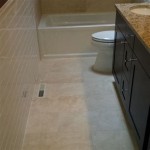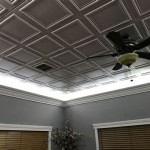How Much Does It Cost To Change The Bathroom?
The cost to change a bathroom is a multifaceted question with no single, definitive answer. The final price tag depends on a wide array of factors, ranging from the scope of the renovation to the materials selected and the geographical location of the project. Understanding these influencing elements is crucial for setting a realistic budget and avoiding potential financial surprises during the bathroom remodeling process.
Embarking on a bathroom renovation can significantly enhance a home's value and improve the daily lives of its inhabitants. Whether it's a simple refresh involving cosmetic updates or a comprehensive overhaul encompassing structural modifications, the project's complexity will invariably impact the overall expenditure. To navigate the financial landscape of bathroom renovations effectively, a thorough understanding of the cost components is essential.
Scope of the Renovation: Defining the Project's Boundaries
The extent of the bathroom renovation serves as a foundational determinant of its cost. A minor cosmetic update, involving tasks such as painting, replacing fixtures (faucets, showerheads), and installing new accessories, generally falls at the lower end of the price spectrum. These types of projects typically maintain the existing layout and plumbing configuration, minimizing the need for extensive labor and material costs.
Conversely, a complete bathroom remodel, which might entail relocating plumbing lines, altering the floor plan, replacing the bathtub with a shower, installing new tiling, and upgrading the vanity, will naturally command a higher price point. Such projects require a greater investment of time, skilled labor, and specialized materials. Structural changes, such as moving walls or expanding the bathroom's footprint, will further escalate the overall cost.
Therefore, clearly defining the scope of the renovation is the first step toward establishing a realistic budget. Homeowners should carefully consider their needs, preferences, and long-term goals for the bathroom space. It is also prudent to consult with a qualified contractor or designer to obtain professional advice on the feasibility and potential costs associated with different renovation options.
Materials and Fixtures: Balancing Aesthetics and Budget
The selection of materials and fixtures constitutes a significant portion of the bathroom renovation budget. From tiling and cabinetry to countertops and plumbing fixtures, the price range can vary dramatically depending on the quality, brand, and design of the chosen items. High-end materials, such as natural stone tiles, custom-built vanities, and designer faucets, will undoubtedly elevate the project's cost compared to more budget-friendly alternatives.
For example, ceramic tiles are generally more affordable than porcelain or natural stone tiles. Similarly, prefabricated cabinets are typically less expensive than custom-made cabinetry. When selecting materials, homeowners should strive to strike a balance between aesthetic appeal, durability, and budget considerations. It is often possible to achieve a stylish and functional bathroom without breaking the bank by carefully choosing materials and opting for cost-effective alternatives.
Furthermore, the cost of plumbing fixtures, such as toilets, sinks, bathtubs, and showerheads, can also significantly impact the overall expenditure. Energy-efficient and water-saving models often come with a higher price tag but can result in long-term savings on utility bills. Researching different brands and comparing prices is essential for making informed decisions and maximizing the budget's potential.
Labor Costs: Securing Qualified Professionals
Labor costs represent a substantial component of the bathroom renovation budget, particularly for projects involving complex plumbing, electrical, or structural work. Hiring qualified and experienced professionals is crucial for ensuring the successful completion of the renovation and avoiding potential problems down the line. The hourly or daily rates charged by contractors, plumbers, electricians, and tile installers can vary depending on their experience, expertise, and geographical location.
Obtaining multiple quotes from different contractors is highly recommended to compare prices and assess their qualifications. It's also wise to check references and review online testimonials to gauge the contractor's reputation and track record. Choosing the lowest bid may not always be the best decision, as it could potentially compromise the quality of the workmanship and lead to costly repairs in the future.
In addition to the hourly rates, homeowners should also factor in potential permit fees and inspection costs. Building permits are typically required for renovations involving plumbing, electrical, or structural modifications. Failure to obtain the necessary permits can result in fines and delays. Therefore, it's essential to research local building codes and regulations and ensure that the contractor obtains all required permits before commencing the renovation work.
Unexpected plumbing or electrical issues can arise during the demolition phase, requiring additional labor and material costs. It is prudent to set aside a contingency fund to cover unforeseen expenses and avoid disruptions to the renovation schedule. Communication is key when dealing with contractors. Discussing the project's scope, budget, and timeline upfront will ensure everyone is on the same page and minimize the risk of misunderstandings.
The geographical location of the project significantly influences the overall cost due to variations in labor rates, material availability, and local regulations. Metropolitan areas with a higher cost of living generally have higher labor rates compared to rural areas. Similarly, the availability of specific materials and fixtures may vary depending on the region, impacting their price. Building codes and regulations can also differ from one location to another, affecting the complexity and cost of the renovation.
When planning a bathroom renovation, homeowners should research local market conditions and obtain quotes from contractors in their area. Understanding the prevailing labor rates and material costs will help them set a realistic budget and avoid potential surprises. Consulting with a local real estate agent can also provide insights into the potential return on investment for different bathroom renovation projects in the area.
The complexity of the bathroom layout and design can also impact the overall cost. Bathrooms with intricate layouts, unusual angles, or limited space may require more time and effort to renovate, leading to higher labor costs. Similarly, custom designs and features can add to the project's expense. Simpler, more straightforward designs are generally more cost-effective to implement.
Homeowners should consider the practicality and functionality of the bathroom design in addition to its aesthetic appeal. Choosing a layout that is both visually appealing and easy to navigate can enhance the overall usability and value of the space. Working with a professional designer can help optimize the bathroom layout and select materials that are both stylish and durable.
The decision to DIY (do-it-yourself) some or all of the bathroom renovation can potentially reduce the overall cost, but it's essential to assess one's skills and experience realistically. While tasks such as painting and installing accessories may be manageable for some homeowners, more complex tasks such as plumbing and electrical work should be left to qualified professionals. Attempting to DIY these tasks without the necessary expertise can result in costly mistakes and even safety hazards.
Moreover, DIY projects often take longer to complete than professionally executed renovations. This can be disruptive to the household and may not be a suitable option for homeowners with limited time or experience. Before embarking on a DIY bathroom renovation, it's crucial to research the necessary steps, obtain the required tools and materials, and be prepared to invest significant time and effort.
Contingency planning is paramount when undertaking any renovation project. Unexpected issues, such as hidden plumbing problems, structural damage, or material delays, can arise at any time and can significantly impact the budget and timeline. A contingency fund of 10-15% of the total budget is recommended to cover unforeseen expenses and avoid disruptions to the renovation schedule.
Homeowners should also be prepared to make adjustments to the design or materials if necessary to stay within budget. Flexibility and adaptability are key to navigating unexpected challenges and ensuring the successful completion of the bathroom renovation. Maintaining open communication with the contractor and promptly addressing any issues that arise can help minimize delays and cost overruns.
The timing of the bathroom renovation can also influence the overall cost. Contractors are often busier during peak seasons, such as spring and summer, which can lead to higher labor rates and longer lead times. Scheduling the renovation during the off-season, such as fall or winter, may result in lower prices and greater availability of contractors. However, it's essential to consider potential weather-related delays during the off-season.
Furthermore, some materials and fixtures may be subject to seasonal price fluctuations. Researching market trends and purchasing materials during sales events can help save money on the renovation project. Planning ahead and being flexible with the timing can be beneficial for optimizing the budget and maximizing the value of the renovation.
Ultimately, the cost to change a bathroom is a highly variable figure dependent on a multitude of interconnected factors. Thorough planning, careful budgeting, and informed decision-making are crucial for achieving a successful and cost-effective renovation. By understanding the key cost drivers and working with qualified professionals, homeowners can transform their bathrooms into functional and stylish spaces without exceeding their financial means.

Cost To Add A Bathroom 2024 Guide Forbes Home

Bathroom Vanity Installation Cost 2024 Average S

How Much Does It Cost To Add A Bathroom 2024 Data

How Much Does A New Bathroom Cost In 2024 Victoriaplum Com

Average Bathtub To Shower Conversion Cost 2024 Forbes Home

How Much Does It Cost To Remodel A Small Bathroom In 2024 Badeloft

2024 Bathroom Remodel Cost Average Renovation Redo Estimator

How Much Does It Cost To Remodel A Bathroom 2024 S
:strip_icc()/housesprucingbathroom3-7b0fca1959964b7cbcc866ada820aba3.jpeg?strip=all)
This Is How Much It Costs To Add A Bathroom

Average Cost To Install Or Replace A Toilet 2024 Guide Forbes Home
Related Posts







